AI is supposed to be a game-changer for organizations and businesses in basically every industry. The fact that 56% of businesses are already neck-deep in AI workflows is clear proof that ‘something' is working. That's the pitch, anyway. It's wrapped in promises of increased efficiency, reduced overhead, smarter decisions, and a sleek, futuristic edge.
But if you've ever sat in on a strategy meeting where someone says "Let's add AI" as if it's a plug-and-play feature, you know the disconnect. Businesses rush to implement AI, hoping for magic.
What they get is a laundry list of unexpected expenses, technical hurdles, and workflow chaos. The dream of seamless automation often crashes hard against the reality of what AI integration actually entails. And those cracks? They're expensive.
Unseen Financial and Operational Burdens of AI

Let's start with the basics: What is AI integration? Well, for starters, AI integration needs data—lots of it. But not just any data—clean, structured, and highly contextual data that reflects your business reality. Most companies don't have that lying around in a usable format. Legacy systems, siloed databases, and inconsistent data standards are all common blockers.
To bridge this gap, businesses often need to make substantial investments long before any AI begins producing results. That includes:
- Building or upgrading data lakes
- Setting up warehousing solutions
- Running intensive cleansing operations
- Labelling datasets
- Stitching together integration platforms
- Establishing solid data governance policies
Just getting your data AI-ready can take months—or even entire business quarters. It's labour-intensive, often underestimated, and almost always expensive.
Then there's the infrastructure layer. AI workloads, especially those involving deep learning or large-scale natural language processing, are computationally hungry. Cloud storage bills can skyrocket during training phases. On-premises hardware? You'll likely need high-performance GPUs, distributed compute clusters, and possibly edge computing devices if real-time processing is a requirement. And don't forget about networking—bandwidth bottlenecks or latency issues can cripple your AI's effectiveness if the infrastructure isn't built for speed and scale.
If your current tech stack isn't optimized for these demands, here's what you'll probably end up doing before your AI project even starts producing ROI:
- Revamping data pipelines to unify and normalize inputs from multiple systems.
- Migrating to cloud-based platforms or hybrid environments to support scalable computing power.
- Upgrading storage solutions to accommodate large volumes of structured and unstructured data.
- Implementing data quality checks and governance protocols to ensure reliability and traceability.
- Re-architecting internal systems to minimize latency and allow seamless AI model integration.
All these changes might not feel like "AI work," but they're the foundation it's built on. Without a strong, scalable infrastructure and a clean data backbone, AI initiatives can collapse under their own weight before ever reaching production.
Ongoing Model Training and Maintenance
One of the most persistent myths about AI is that it's a one-and-done implementation. Build it, train it, deploy it—done, right? Not even close. AI models decay over time. The data that trained them becomes outdated, customer behaviour shifts, and new competitors change the game. Your models need continuous retraining with fresh data, ongoing tuning to align with business goals, and constant monitoring to catch performance drift.
This isn't a passive task. Even if it's just AI chatbot integration, keeping an AI system functional and relevant requires a well-oiled ecosystem of professionals and tools. At a minimum, it demands experienced data scientists to interpret and reshape models, MLOps engineers to manage pipelines and deployments, and a QA team to continuously test and validate results.
If you're outsourcing this work, the costs can quickly balloon due to hourly billing, support fees, and dependency on third-party timelines. On the other hand, building an in-house team requires significant upfront investment in hiring, onboarding, and tooling. You'll need monitoring dashboards to track model performance in real time, robust data pipelines to feed models continuously, and retraining triggers to keep outputs aligned with evolving datasets.
Some of the core recurring needs include:
- Model versioning and auditing to manage and compare multiple iterations
- Storage infrastructure to handle large datasets and trained models
- Performance drift detection to catch deviations before they affect business outcomes
- CI/CD pipelines for seamless deployment and rollback
And don't forget storage: every version of every model needs to be tracked, archived, and compared over time—not just for technical reasons but often for compliance and auditability. AI is a living system, constantly evolving, never truly done. Treating it as a finished product is a fast track to obsolescence.
Operational Disruptions and Staff Retraining
AI doesn't just streamline content creation or automate tasks—it transforms them. Does that mean your existing workflows? They're likely incompatible, and most software developers consider any reworks as turbulence in their routine. Thus, you must expect disruptions as you restructure operations, redesign business processes, and recalibrate KPIs. Even seemingly simple changes can trigger bottlenecks.
And then there's your team. Most staff aren't ready to work alongside AI out of the box. They need retraining—not just technically, but also culturally. People need to trust the systems, understand their limitations, and know when to override or question them.
Resistance is common, especially if AI is seen as a threat to job security. Similarly, productivity often dips before it climbs, for a multitude of reasons. All of this translates to downtime, miscommunication, and morale challenges that ripple across departments.
Security, Privacy, and Regulatory Compliance
Thinking about the intersection between AI data integration and data privacy? It's a legal and ethical labyrinth. When your models touch user data—even anonymized—you risk breaching regulations like GDPR, HIPAA, or CCPA. And that's just the tip of the iceberg. You need robust security protocols to prevent leaks, unauthorized model access, and reverse engineering.
There's also the problem of explainability. If regulators or customers ask how a decision was made (say, a loan rejection or insurance premium increase), you'd better be ready with answers. Not to mention, black-box models can create compliance nightmares. You'll need legal audits, explainable AI frameworks, and ironclad documentation. Compliance is a moving target, and staying ahead of it is both essential and expensive—it may require an AI integration specialist.
Scalability and Future-Proofing

Let's say your AI business integration project works. It delivers value, and the executive team is thrilled. But success breeds expectation—and scale. Now comes the real challenge: expanding that AI-driven value across new teams, departments, or entire regions. That means onboarding more users, processing exponentially more data, deploying additional models, and adapting the system to diverse use cases. Not to mention, an AI integration agency will likely have to step in at some point.
Scaling isn't linear. In fact, it often reveals cracks that were manageable at a small scale but become serious bottlenecks under pressure. You'll face new architectural decisions, evolving user management requirements, unpredictable cost curves, and heightened demands for governance and oversight.
To stay ahead, you'll need to build the right foundations:
- CI/CD pipelines for automated model testing and deployment
- Containerized environments to ensure portability across cloud and on-prem systems
- Real-time monitoring and alerting tools to track model drift and performance
- Load balancing strategies to prevent latency spikes under stress
Licensing costs can balloon with the scale of your AI integration project, especially if you're tied to enterprise software or cloud credits. Performance tuning becomes not just helpful—but essential. And remember: what worked perfectly at 100 predictions per day may completely collapse at 10,000. AI systems must be designed with scalability in mind from the very beginning, or you risk expensive technical debt and major rework down the road.
Smart Budgeting Strategies for AI Adoption

Too many AI projects are greenlit on wildly optimistic budgets, leading some to believe it's another bubble. Leaders account for licenses, maybe some cloud computing, and a few salaries. But what about integration time? Tooling? APIs? Data acquisition fees? External consultants? Infrastructure monitoring? Staff ramp-up periods?
These hidden costs are deal-breakers if ignored. Budget conservatively and make sure the strategy fits in the grand scheme of things. Bake with a margin for error. Vendor lock-in is another trap—migrating from one AI platform to another can be more expensive than starting from scratch. Factor in contract terms, migration costs, and support limitations early. Transparency in forecasting is your best defence.
Phased Rollouts and Pilot Programs
AI doesn't reward the reckless. It rewards the iterative. Start small. Roll out a pilot project in a low-risk domain and document everything—cost, performance, user adoption, and integration speed. Treat it like a case study for your own organization. Use this data to refine your roadmap.
Phased rollouts let you learn before you scale. They keep costs contained and prevent massive overruns. More importantly, they help you build internal buy-in. When teams see results—small wins, real gains—they're more likely to support larger implementations. Gradual scaling gives you the agility to pivot without burning the budget.
Build vs. Buy: Making Strategic Choices
Build gives you control, customization, and long-term savings. But it also demands deep in-house expertise, robust development pipelines, continuous model monitoring, and a dedicated support infrastructure. You assume responsibility for every aspect of your system, from performance and security to compliance and scale. The upfront investment is high, but the autonomy and flexibility can be invaluable if your organization is ready.
Buying, on the other hand, accelerates deployment and reduces your staffing requirements. It often comes with built-in support, pre-trained models, and seamless integrations. However, it can lock you into proprietary ecosystems, limit your ability to customize solutions deeply and expose you to unpredictable pricing models as your usage scales. This approach works well for teams that need speed and don't want to build technical debt, but it comes at the cost of control.
Here's how the two approaches compare in key areas:
|
Consideration |
Build |
Buy |
|
Control & Customization |
Full control over architecture, data handling, and algorithms |
Limited by vendor capabilities and roadmap |
|
Time to Deployment |
Longer ramp-up due to internal development |
Faster deployment with turnkey solutions |
|
Scalability |
Flexible scaling options tailored to your systems |
Scaling may require expensive upgrades or new plans |
|
Long-Term Cost |
Higher upfront, lower recurring cost |
Lower upfront, higher recurring fees |
|
Talent Requirements |
Requires in-house AI/ML and DevOps talent |
Less technical talent is needed initially |
|
Maintenance |
Internal teams handle updates, bugs, and optimization |
Vendor handles support but may lack flexibility |
|
Innovation Potential |
Easier to experiment and iterate with custom solutions |
Innovation pace tied to vendor roadmap |
Evaluate your core competencies. Are you in a position to build reliably and maintain it long-term? Do you need rapid deployment for a time-sensitive project? Will your vendors evolve fast enough to keep pace with your business? Often, the best approach isn't either-or. A hybrid model lets you build your differentiators while buying commoditized capabilities. Just make sure you're not paying enterprise pricing for something your dev team could replicate in weeks.
Conclusion: Measuring the Long-Term ROI of AI

AI isn't just a cost-cutting tool. If it is, you're probably underutilizing it. Real ROI includes enhanced personalization, faster iteration, smarter product recommendations, and even entirely new lines of business. The impact is multi-dimensional and touches every part of an organization. To break it down clearly:
- Operational – AI can streamline processes, automate repetitive tasks, and improve decision-making speed, but it also requires major shifts in workflows and infrastructure.
- Strategic – Long-term competitiveness hinges on how well AI aligns with business goals. It enables new offerings, market differentiation, and faster innovation cycles.
- Cultural – AI adoption reshapes company culture. It introduces new roles, requires digital literacy, and demands buy-in across teams to avoid resistance and ensure long-term success.
Understanding and preparing for these layers of impact is essential to unlock meaningful ROI from AI initiatives.
Identify clear KPIs tied to business outcomes. Track AI's influence on churn rates, net promoter score (NPS), upsell rates, and process throughput. Link improvements to AI-driven decisions, not just backend automation. That's how you make the case for continued investment.
Sustainability, Adaptability, and Value Over Time
An AI system that can't adapt will eventually become a liability. Prioritize systems that support versioning, modular design, and reusable components. The longer your AI systems remain relevant, the more exponential their ROI becomes.
Look for AI frameworks and platforms that can integrate with future tools, evolve with shifting regulations, and remain transparent to stakeholders. Sustainability means being able to audit, update, and scale without starting over. That's how you future-proof your investment—not just technically, but strategically.

Magnus Eriksen
Magnus Eriksen is a copywriter and e-commerce SEO specialist with a degree in Marketing and Brand Management. Before embarking on his copywriting career, he was a content writer for digital marketing agencies such as Synlighet AS and Omega Media, where he mastered on-page and technical SEO.











2.png)
2.png)









